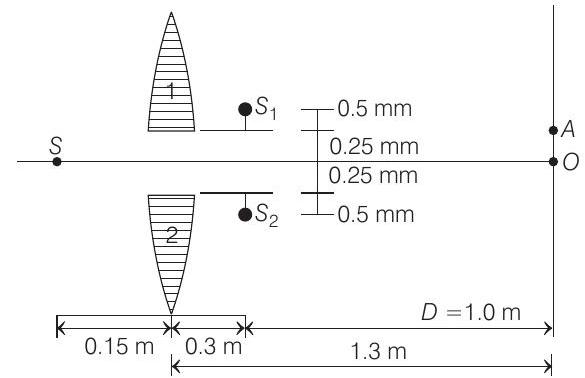Optics 3 Question 38
38. In given figure,

(a) If the third intensity maximum occurs at the point
(b) If the gap between
Show Answer
Answer:
Correct Answer: 38. (a)
Solution:
- (a) For the lens,
Therefore, using
Linear magnification,
Hence, two images
Hence,
Therefore, fringe width,
Now, as the point
NOTE The language of the question is slightly confusing. The third intensity maximum may be understood as second order maximum (zero order, first order and the second order). In that case
(b) If the gap between







